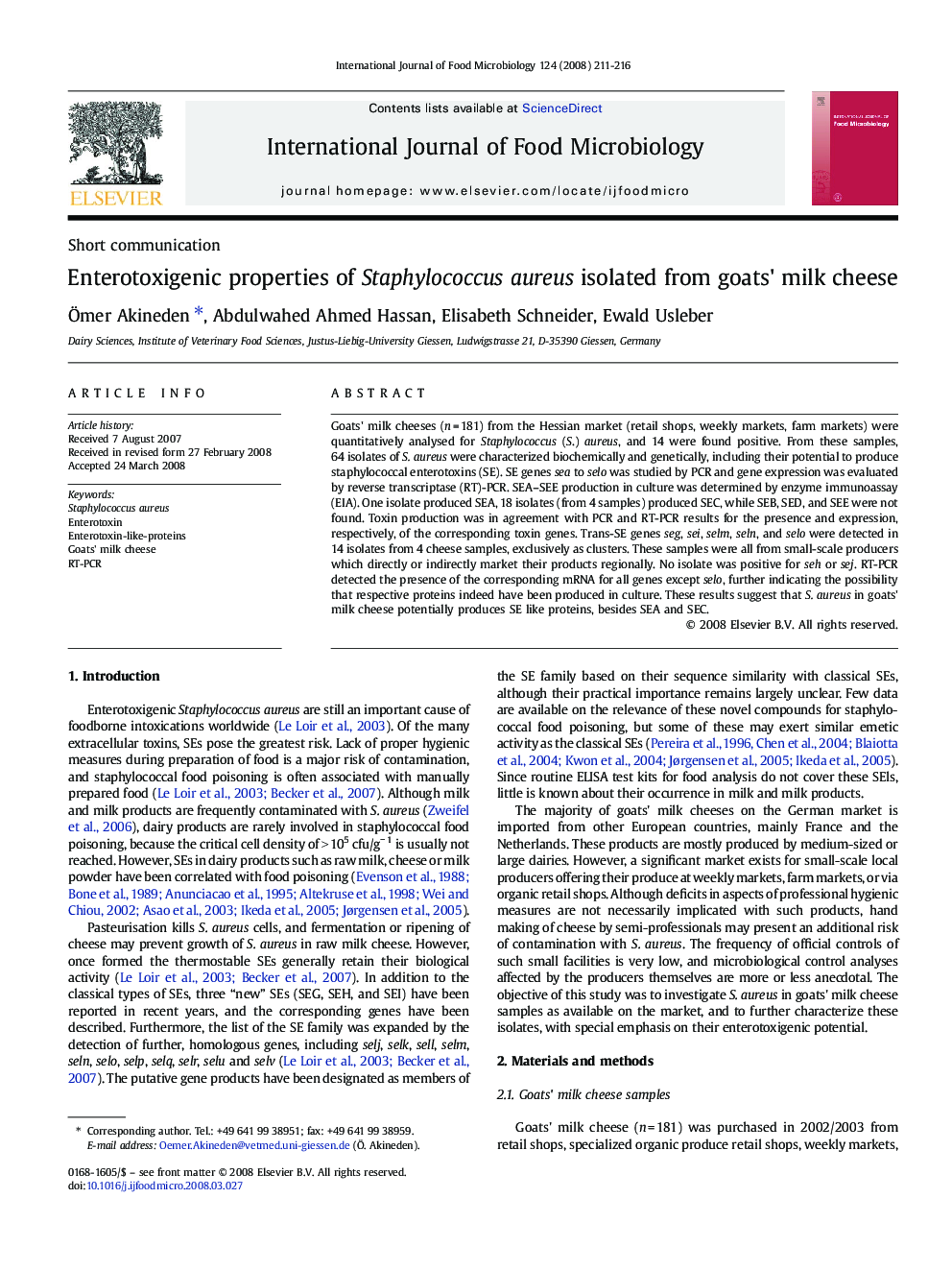| Article ID | Journal | Published Year | Pages | File Type |
|---|---|---|---|---|
| 4369087 | International Journal of Food Microbiology | 2008 | 6 Pages |
Goats' milk cheeses (n = 181) from the Hessian market (retail shops, weekly markets, farm markets) were quantitatively analysed for Staphylococcus (S.) aureus, and 14 were found positive. From these samples, 64 isolates of S. aureus were characterized biochemically and genetically, including their potential to produce staphylococcal enterotoxins (SE). SE genes sea to selo was studied by PCR and gene expression was evaluated by reverse transcriptase (RT)-PCR. SEA–SEE production in culture was determined by enzyme immunoassay (EIA). One isolate produced SEA, 18 isolates (from 4 samples) produced SEC, while SEB, SED, and SEE were not found. Toxin production was in agreement with PCR and RT-PCR results for the presence and expression, respectively, of the corresponding toxin genes. Trans-SE genes seg, sei, selm, seln, and selo were detected in 14 isolates from 4 cheese samples, exclusively as clusters. These samples were all from small-scale producers which directly or indirectly market their products regionally. No isolate was positive for seh or sej. RT-PCR detected the presence of the corresponding mRNA for all genes except selo, further indicating the possibility that respective proteins indeed have been produced in culture. These results suggest that S. aureus in goats' milk cheese potentially produces SE like proteins, besides SEA and SEC.
